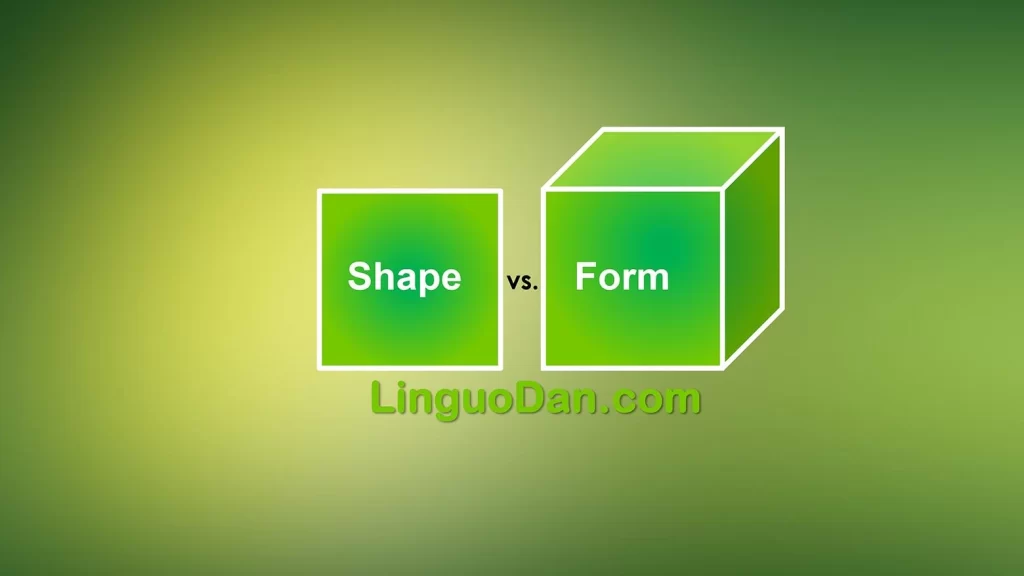Difference between “Form” and “Shape” in English

What is the difference between “Form” and “Shape” in English?
When learning English, you often come across words that seem similar but have different meanings. Two such words that often cause confusion are “form” and “shape.” Although they can sometimes be used interchangeably, understanding the difference can improve communication clarity and accuracy. As you guessed from the picture, “shape” is mostly used when we talk about the boundaries (contours) of something (for example, a square), and “form” when we talk about three-dimensional objects (for example, a cube). This article will explore the differences between them in more detail to help you understand how to use “shape” and “form” correctly in English.
What is ‘Shape’?
The word “shape” is a noun that refers to the external form, contours, or outline of someone or something. It’s the geometric figure or physical configuration we can see. When you think about shape, consider the immediate visual boundaries of an object. Shapes can be geometric (like circles, squares, rectangles) or organic (irregular, less defined forms like the shape of a tree or cloud).
Examples of ‘shape’:
- The book has a rectangular shape.
- She admired the perfect round shape of the bubbles.
What is ‘Form’?
On the other hand, “form” is more complex and multifaceted. It can refer to the shape of something, but it also encompasses the structure, pattern, and arrangement that gives something its distinctive character. When we use “form,” we refer not just to the outline but to the three-dimensional aspect of something, considering its volume and the organization of its parts.
Furthermore, “form” can also relate to a particular type or variety something can take. In art, for instance, “form” might refer to the style or medium used, as well as the physical dimensions.
Examples of ‘form’:
- The artist considered both the shape and the form of his sculpture.
- The ice took on a peculiar form as it melted.
Key Differences – Shape vs. Form
-
Dimensionality: While “shape” generally refers to a two-dimensional outline, “form” implies a three-dimensional composition which includes depth, making it more complex.
-
Context: “Shape” is a term often used in more concrete and specific contexts, like in mathematics or when discussing objects’ geometrical attributes. “Form,” however, transcends the physical, being used in contexts of art, design, and even bureaucracy (as in ‘filling out a form’), indicating structure and arrangement.
-
Abstraction: “Shape” is straightforward with its focus on the visual aspect. “Form” can be more abstract, referring to forms of thinking, conditions of existence, or manifestations of ideas.
Examples in Sentences to Illustrate the Difference
- The shape of the cookie was a simple circle, but the form it took after decoration was complex.
- While the shape of a leaf is generally oval, the form of a plant includes the stem, branches, texture, and other characteristics.
Conclusion
Both “shape” and “form” can be used for objects in English. It should be understood that “shape” often refers to a two-dimensional outline, and “form” to a more holistic, sometimes abstract, three-dimensional arrangement, English learners can more accurately describe the physical world and artistic expressions.
Remember, the more you immerse yourself in the language and its subtleties, the more proficient you become. Keeping a keen eye on the context can help distinguish the usage of similar words like “shape” and “form,” enriching your English learning journey.